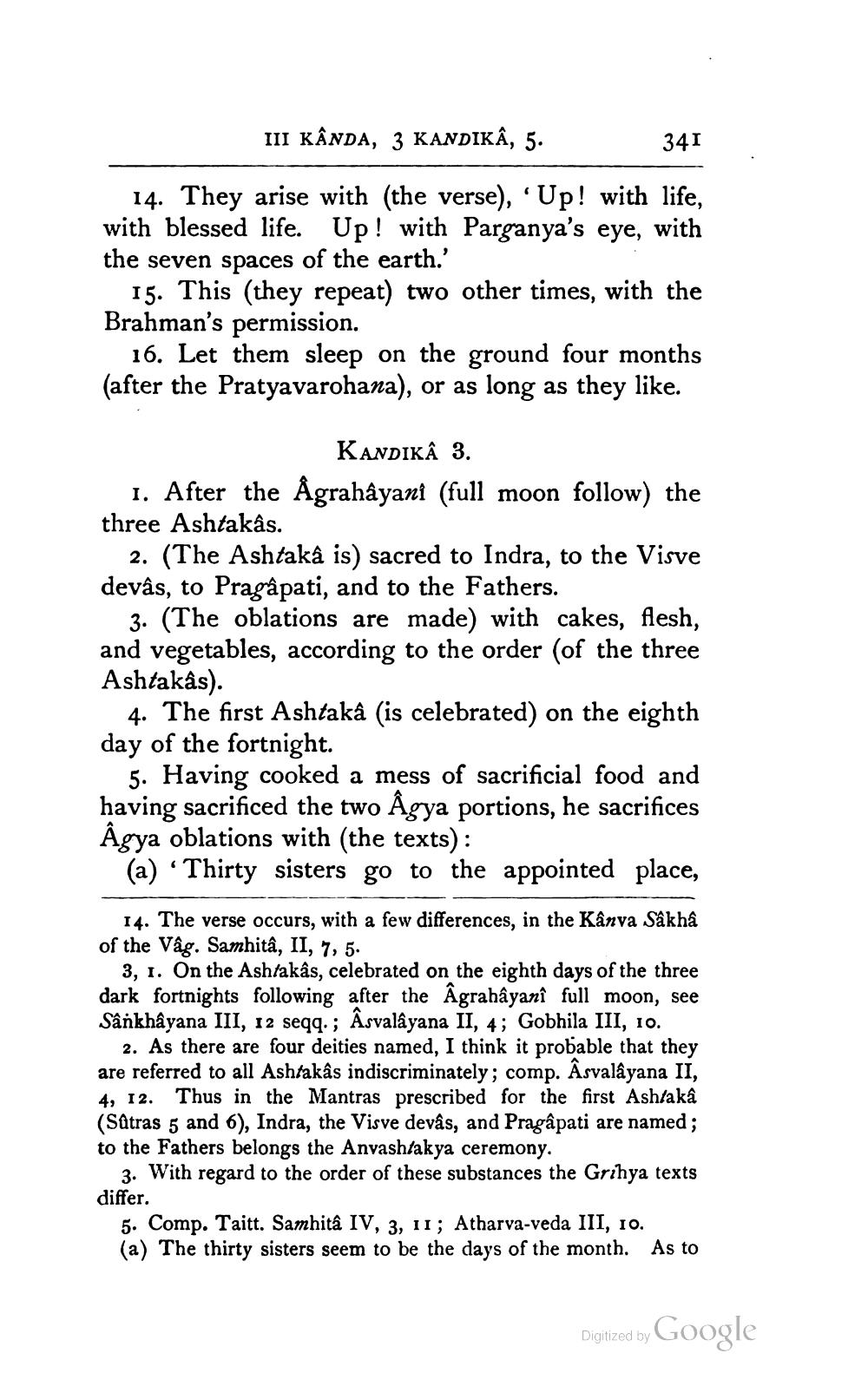________________
III KÂNDA, 3 KANDIKÂ, 5.
341
14. They arise with (the verse), 'Up! with life, with blessed life. Up! with Parganya's eye, with the seven spaces of the earth.'
15. This (they repeat) two other times, with the Brahman's permission.
16. Let them sleep on the ground four months (after the Pratyavarohana), or as long as they like.
KANDIKÂ 3. 1. After the Ågrahầyani (full moon follow) the three Ashtakâs.
2. (The Ashtakâ is) sacred to Indra, to the Visve devâs, to Pragâpati, and to the Fathers.
3. (The oblations are made) with cakes, flesh, and vegetables, according to the order (of the three Ashtakâs).
4. The first Ashtaka (is celebrated) on the eighth day of the fortnight.
5. Having cooked a mess of sacrificial food and having sacrificed the two Âgya portions, he sacrifices Âgya oblations with (the texts):
(a) “Thirty sisters go to the appointed place,
14. The verse occurs, with a few differences, in the Kânva Sâkhâ of the Vâg. Samhitâ, II, 7, 5.
3, 1. On the Ashtakâs, celebrated on the eighth days of the three dark fortnights following after the Âgrahayanî full moon, see Sânkhâyana III, 12 seqq.; Asvalâyana II, 4; Gobhila III, 10.
2. As there are four deities named, I think it probable that they are referred to all Ashtakâs indiscriminately; comp. Asvalâyana II, 4, 12. Thus in the Mantras prescribed for the first Ashtaka (Sätras 5 and 6), Indra, the Visve devâs, and Pragapati are named; to the Fathers belongs the Anvashtakya ceremony.
3. With regard to the order of these substances the Grinya texts differ.
5. Comp. Taitt. Samhita IV, 3, II; Atharva-veda III, 1o. (a) The thirty sisters seem to be the days of the month. As to
Digitized by Google




